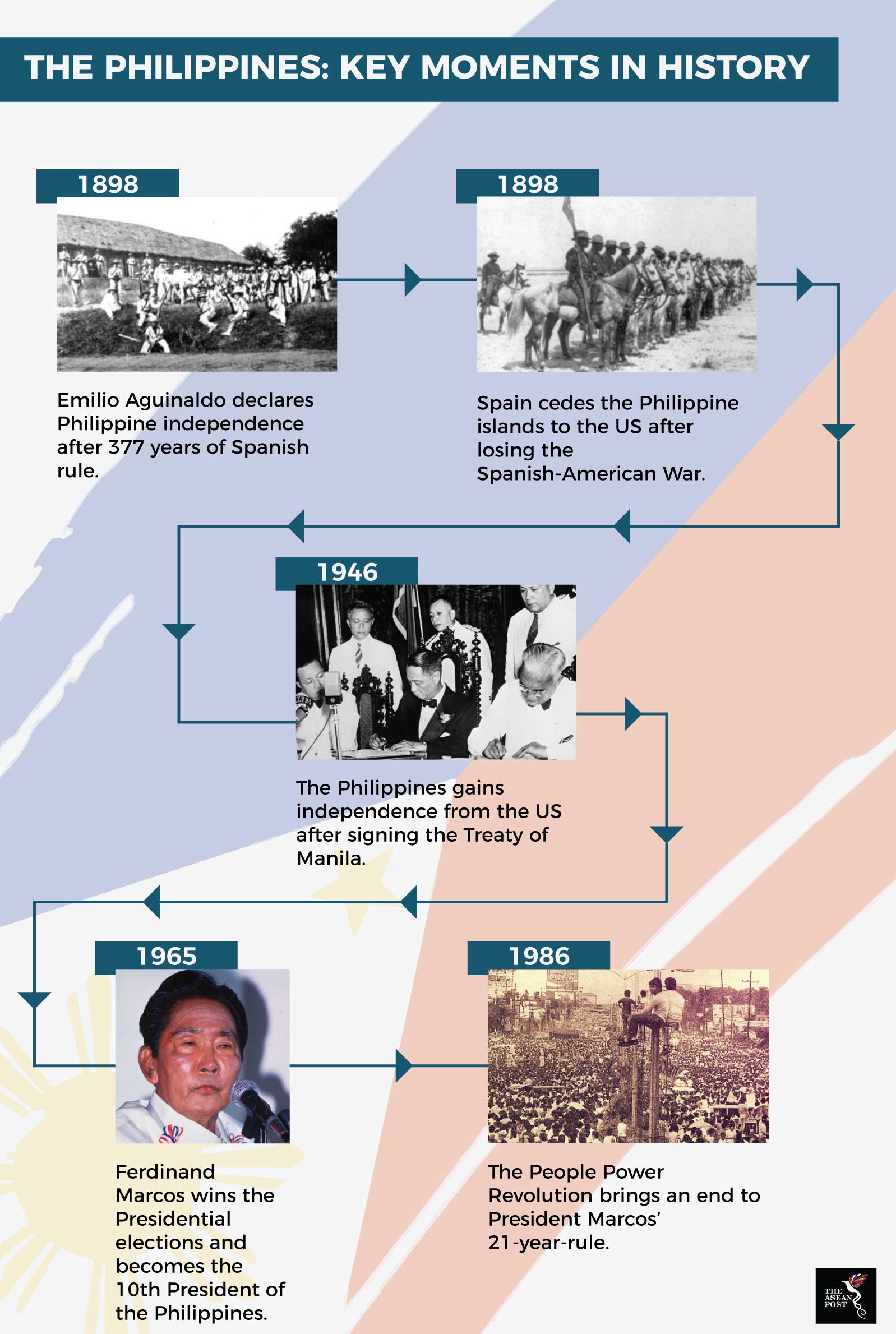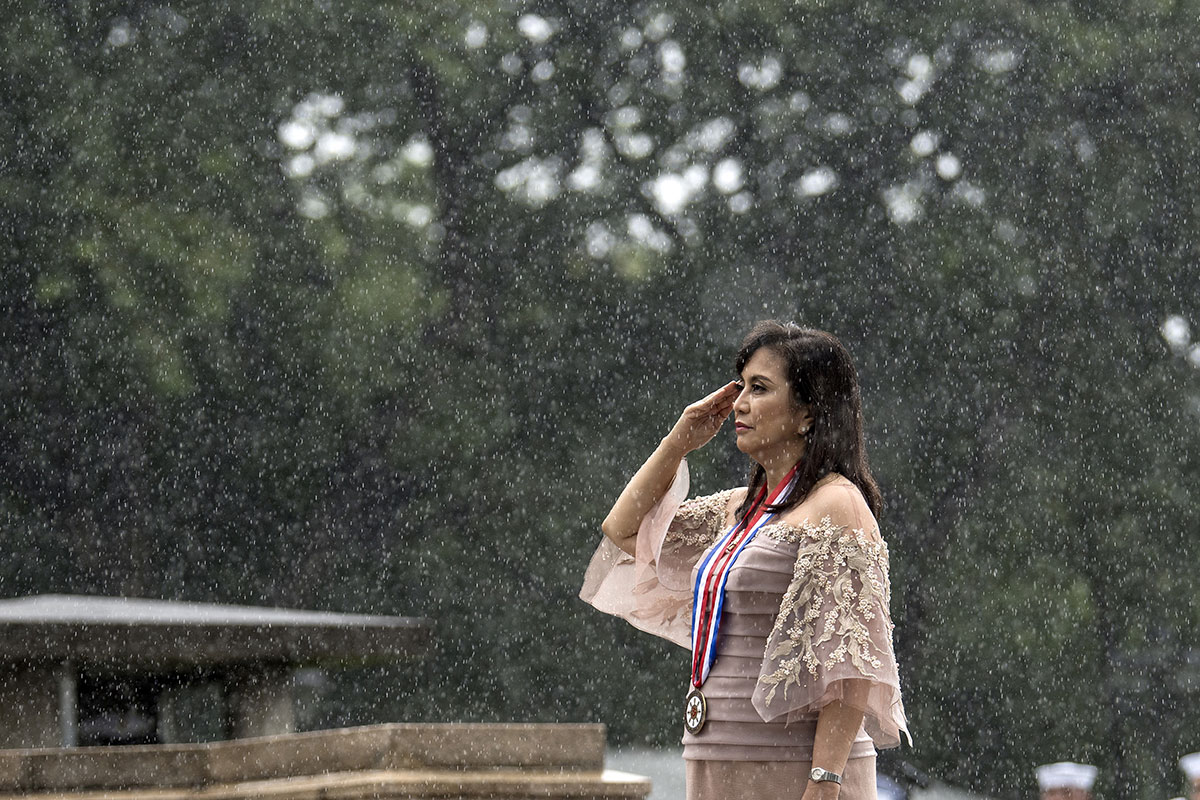Emilio Aguinaldo was only 19-years-old when he issued a decree on 12 June, 1898 declaring the independence of the Philippines from Spain. The young revolutionary thought that a declaration of independence would inspire the people of the Philippines to unite and fight against the Spanish.
Today marks the 120th anniversary of the independence of the Philippines from the Spanish after more than 500 years of colonial rule. Ever since then, the nation has overcome various challenges – including an American occupation, Japanese occupation and a dictatorial regime – to become what it is today, a country rapidly on the rise. As home to over 101 million people, it is one of Southeast Asia’s fastest growing economies according to the World Bank. The World Bank projected the Philippines’ gross domestic product (GDP) to grow 6.7 percent in 2018 and 2019.
A brief history of the Philippines
The Philippines was one of the first countries in Southeast Asia to overthrow its colonial masters. The Spanish empire arrived in the Philippines in 1521 and continued to rule until 1898. Up until the early 1890’s rebellion against the Spanish Empire were spare and largely insignificant. However, revolutionary fervour started when ideas of nationalism, independence and liberalism started seeping into Filipino society. One of the key figures that was influential in spreading such ideas was Jose Rizal. A writer, Jose Rizal’s work largely focused on progressive ideals such as the rights of an individual and equality under the law.
 Source: Various sources
Source: Various sources
Katipunan also played an instrumental role in the Philippines’ struggle for independence from the Spanish. Founded by nationalists Andrés Bonifacio, Teodoro Plata and Ladislao Diwa, Katipunan was a secret group who wanted freedom through revolution. Despite having similar aims to Jose Rizal, Katipunan believed in an armed uprising while Jose Rizal rejected it. It was the combination of progressive ideas and the agitation by Katipunan which led to the Philippine Revolution of 1896.
However, defeating the Spanish was not enough. The Spanish ceded its Philippine territories to the United States (US) after losing the Spanish-American War. From 1898 to 1946, the Philippines found itself under American rule. The Philippines gained full independence in 1946, a year after the Japanese occupation of the Philippines. On 4 July, 1946, both the Philippines and the US signed the Treaty of Manila which recognised the independence of the Philippines.
Fast forward 20 years, and the Philippines faced another challenge. In 1965, Ferdinand Marcos won the presidential election and became the 10th President of the Philippines. The Marcos administration left a legacy that was littered with corruption and power abuses. According to historian Alfred McCoy, as many as 3,257 people were murdered, 35,000 tortured, and 70,000 illegally detained under his regime. Retribution came in 1986, when Filipinos launched the People Power Revolution to overthrow President Marcos.
Philippines in the 21st century
The Philippines has come a long way to become what it is today. Despite many challenges, the country has risen above them all and has become better for it. The Philippines today is in a unique position, and with that, comes a new set of challenges too.
Domestically, the people have to deal with issues such as terrorism and a deadly drug war waged by President Rodrigo Duterte. The drug war has drawn the ire of the international community as reports have shown the death toll has now exceeded 15,000.
Meanwhile, the government has ambitious plans for the country. Rodrigo Duterte’s “Build! Build! Build!” infrastructure programme is expected to elevate the Philippines; taking it into the future and turning it into a high-income nation. The project is estimated to cost the country US$180 billion, with over 70 projects planned nationwide. The country has taken extensive loans from China and Japan to finance these projects.
On the security front, the Philippine government faces pressure from both, China and the US over its stance in the South China Sea. At the same time, China is beginning to militarise the islands on the South China Sea.
The Philippines is headed towards an exciting future although there are many challenges ahead. But just as its history has shown, the people of this country are resilient enough to overcome any hurdle in their path.
